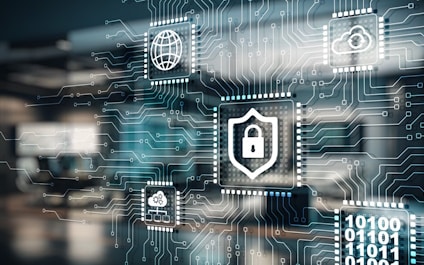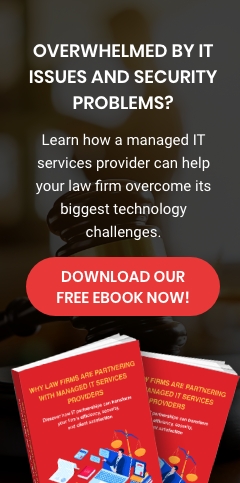Cybercriminals use multiple tactics, from phishing to malware, to exploit vulnerabilities at various points within a system. Defending your system against these threats will require a layered approach to cybersecurity to ensure a comprehensive defense.
Why a layered approach is vital for cybersecurity
A robust cybersecurity strategy is like constructing a fortified castle with tightly guarded access points and multiple layers of walls to keep intruders out. If a business relies solely on endpoint security, the entire defense crumbles if a user makes a single mistake, such as unknowingly clicking on a malicious link in an email or accidentally sharing confidential company information. With a layered approach, even if the initial layer is breached, additional barriers like network and application security are in place to prevent the threat from advancing.
One example of cybercriminals getting through just a couple of layers of security is the notorious ransomware attack on Colonial Pipeline. Phishing, weak endpoint security, and inadequate network monitoring contributed to the failed protection of Colonial Pipeline. In hindsight, a robust, layered approach could have disrupted the attack at multiple points, preventing severe consequences post-breach.
How to achieve a layered cybersecurity approach
Here’s how you can protect your system using a layered approach:
1. Identify the assets you need to protect
Such assets include critical data, applications, devices, and network infrastructure.
- Critical data – Not all data is similarly significant. Prioritize and identify sensitive information, including customer data, financial records, intellectual property, and any other data that, if compromised, could lead to severe consequences.
- Applications – Assess and prioritize internal and external applications used within your organization.
- Devices – Identify and catalog all endpoint devices, including computers, laptops, and smartphones. Every device should have updated security software. Also, you should assess the security of servers and network devices within your IT infrastructure.
- Network infrastructure – Secure your external connections, such as internet gateways and third-party networks or cloud services, to prevent unauthorized access and potential threats from external sources.
2. Implement controls at different levels or layers
Use a combination of physical security, network security, endpoint security, application security, and data security controls alongside a comprehensive employee security awareness training program.
- Physical security
- Physically safeguard all devices, including servers, routers, and computers, to prevent unauthorized access or tampering. You can implement biometric access controls, surveillance systems, and restricted entry points.
- Implement measures like access card systems, surveillance cameras, and environmental controls to ensure the safety and integrity of servers and critical hardware.
- Network security
- Employ robust firewalls to monitor and control incoming and outgoing network traffic based on predetermined security rules.
- Use intrusion detection/prevention systems (IDS/IPS) that actively monitor network or system activities for malicious exploits or security policy violations. When anomalies are detected, they trigger alerts or take automated actions to block potential threats.
- Endpoint security
- Deploy advanced antivirus and anti-malware solutions on individual devices to detect and eliminate malicious software. Make sure to update these programs regularly.
- Use endpoint detection and response (EDR) solutions that provide real-time monitoring and response capabilities on individual devices, allowing for the swift detection and containment of potential security incidents.
- Application security
- Implement secure coding practices during the development of applications to minimize vulnerabilities. Regularly update and patch applications to address newly discovered security flaws.
- Use web application firewalls (WAFs). WAFs filter and monitor HTTP traffic between a web application and the internet.
- Data security
- Employ encryption to safeguard sensitive information from unauthorized access when the data is at rest and during transit.
- Implement strict access controls to regulate who can access specific data, such as user authentication, authorization, and periodic reviews of access privileges to align with organizational needs.
- User education
- Educate your employees on the risks and characteristics of phishing attacks. Regularly conduct training sessions to help them identify phishing attempts and avoid falling victim to social engineering tactics.
- Establish and communicate clear security policies and procedures to your staff so they understand the importance of following these guidelines.
3. Continuously monitor and improve
The cybersecurity landscape is dynamic, with threats evolving constantly. Assess your defenses on a regular basis and update security controls accordingly to stay ahead of potential risks.
Protect your business with layered security
These days, a comprehensive defense against cyberthreats is an imperative, not an option. A layered security approach makes it more difficult for attackers to breach systems and gain unauthorized access to sensitive data. This approach is an effective strategy for your company’s digital security.
For a layered approach to your cybersecurity, partner with us at USWired. You can even get a complimentary consultation with our experts on your business needs and the security you need. We service businesses in San Jose and the Greater Bay Area as well as in Atlanta and Chicago. Are you interested in partnering with us? Contact us today.



